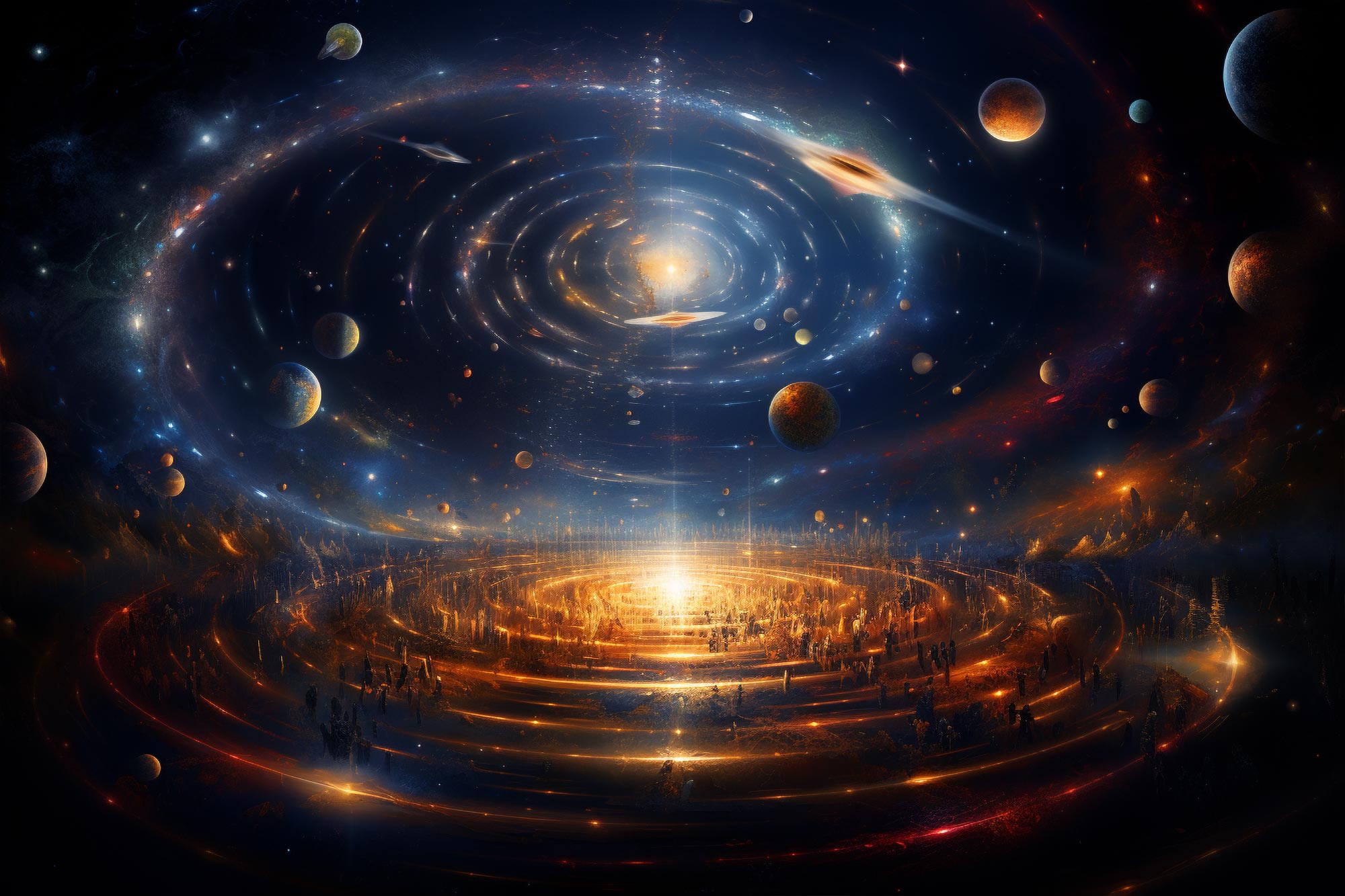Noi cercetări dublează vârsta universului la 26,7 miliarde de ani


Un nou studiu sugerează că universul ar putea avea o vechime de 26,7 miliarde de ani, aproape dublul vârstei larg acceptate de 13,7 miliarde de ani. Noul model, care încorporează teoria luminii obosite a lui Zwicky și constantele de cuplare Dirac în evoluție, poate explica existența galaxiilor tinere și mature formate la doar 300 de milioane de ani după Big Bang și poate propune o interpretare revizuită a constantei cosmologice.
Un nou studiu sugerează că universul ar putea avea o vechime de 26,7 miliarde de ani, provocând estimarea larg acceptată de 13,7 miliarde de ani bazată pe modelul de concordanță Lambda-CDM.
Universul nostru ar putea fi de două ori mai vechi decât estimările actuale, conform unui nou studiu care contestă modelul cosmologic predominant și aruncă o lumină nouă asupra așa-numitei „probleme imposibile ale galaxiilor timpurii”.
spune autorul Rajendra Gupta, profesor asociat de fizică la Școala de Științe a Universității din Ottawa.

„Modelul nostru nou conceput extinde timpul de formare a galaxiei cu câteva miliarde de ani, făcând universul să aibă o vechime de 26,7 miliarde de ani, nu 13,7 așa cum s-a estimat anterior”. Rajendra Gupta – profesor asociat de fizică la Facultatea de Științe, Universitatea din Ottawa. Credit: Universitatea din Ottawa
De ani de zile, astronomii și fizicienii calculează vârsta universului nostru măsurând timpul scurs de când[{” attribute=””>Big Bang and by studying the oldest stars based on the redshift of light coming from distant galaxies. In 2021, thanks to new techniques and advances in technology, the age of our universe was thus estimated at 13.797 billion years using the Lambda-CDM concordance model.
However, many scientists have been puzzled by the existence of stars like the Methuselah that appear to be older than the estimated age of our universe and by the discovery of early galaxies in an advanced state of evolution made possible by the James Webb Space Telescope. These galaxies, existing a mere 300 million years or so after the Big Bang, appear to have a level of maturity and mass typically associated with billions of years of cosmic evolution. Furthermore, they’re surprisingly small in size, adding another layer of mystery to the equation.
Zwicky’s tired light theory proposes that the redshift of light from distant galaxies is due to the gradual loss of energy by photons over vast cosmic distances. However, it was seen to conflict with observations. Yet Gupta found that “by allowing this theory to coexist with the expanding universe, it becomes possible to reinterpret the redshift as a hybrid phenomenon, rather than purely due to expansion.”
“Our newly-devised model stretches the galaxy formation time by several billion years, making the universe 26.7 billion years old, and not 13.7 as previously estimated.”
— Rajendra Gupta, Adjunct professor of physics in the Faculty of Science at the University of Ottawa
In addition to Zwicky’s tired light theory, Gupta introduces the idea of evolving “coupling constants,” as hypothesized by Paul Dirac. Coupling constants are fundamental physical constants that govern the interactions between particles. According to Dirac, these constants might have varied over time. By allowing them to evolve, the timeframe for the formation of early galaxies observed by the Webb telescope at high redshifts can be extended from a few hundred million years to several billion years. This provides a more feasible explanation for the advanced level of development and mass observed in these ancient galaxies.
Moreover, Gupta suggests that the traditional interpretation of the “cosmological constant,” which represents dark energy responsible for the accelerating expansion of the universe, needs revision. Instead, he proposes a constant that accounts for the evolution of the coupling constants. This modification in the cosmological model helps address the puzzle of small galaxy sizes observed in the early universe, allowing for more accurate observations.
On July 7, 2023, the study, “JWST early Universe observations and 𝚲CDM cosmology,” was published in the Monthly Notices of the Royal Astronomical Society (MNRAS) by Oxford University Press.
Reference: “JWST early Universe observations and ΛCDM cosmology” by R Gupta, 7 July 2023, Monthly Notices of the Royal Astronomical Society.
DOI: 10.1093/mnras/stad2032

„Creator. Amator de cafea. Iubitor de internet. Organizator. Geek de cultură pop. Fan de televiziune. Mândru foodaholic.”
